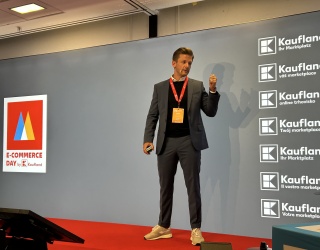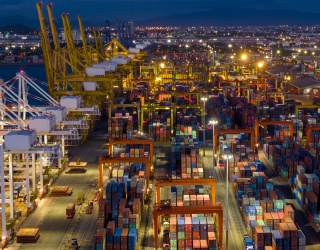There has been a major change in German department stores. Leadership has transitioned to Galeria Kaufhof, making it one of the leading department stores in Europe. Kaufhof is well known to German consumers having opened its doors 133 years ago. It currently operates 105 stores in Germany and 15 stores in Belgium. In fiscal 2011 the company recorded revenues of 3.5 billion Euros (or about $4.5 billion at current exchange rate).
The company ranks fourth among Europe’s department store chains, after Marks & Spencer (10.9 billion Euros), El Corte Ingles (9.4 billion Euros), and John Lewis (4.2 billion Euros). Other leading department stores in Europe include Galeries Lafayette (3.4 billion Euros), Debenhams (3.4 billion Euros), Karstadt (3.3 billion Euros), Manor (2.4 billion Euros), Printemps (1.5 billion Euros) and House of Fraser (1.4 billion Euros). Kaufhof is owned by Metro Group, a diversified German retail holding company that has mainly supermarkets, cash & carry stores and electronic stores under its wings. Sales for Metro in fiscal 2011 were 66.7 Billion Euros ($85 Billion.)
Proftiable growth in the past 12 years
Under the leadership of Mr. Lovro Mandac, Kaufhof’s dynamic chairman, the company has had profitable growth in the past 12 years. I think that the shrinking German middle class – and it is shrinking in Germany as it is in the United States – has made Kaufhof their shopping destination of choice. Kaufhof’s merchants pay careful attention to the need of their customers in family apparel, as well as in home goods, and in its truly excellent food halls. In home furnishing the company features brands like Rosenthal, Vileroy & Bosh and WMF, while in women’s fashion the company features brands like Esprit, S. Oliver, Tom Taylor and Gerry Weber. For men, one finds brands like Tommy Hilfiger, Bugatti, Olymp and Weltstein.
Challenging climate in retail
Retailing in Germany has been challenging. The German economy in 2011 grew by 3% in real terms, while the private sector grew a more modest 1.5%. Unemployment dropped from 7.7% to 7.1% but retail sales rose by only 2.4% partially reflecting an inflation rate of 2%. For 2012 nominal growth of 1.5% is expected. These statistics underscore the fact that retail trade is stagnating, which it has been since 2003.
Kaufhof has embraced omnichannel merchandising
Kaufhof has done an excellent job despite the difficult backdrop through its consistent merchandising. Because of this the company has gained trust of its customers. Lately, similar to developments in the United States at leading departments stores such as Macy’s, Kaufhof has embraced omnichannel merchandising and is offering its merchandise both through the Internet and direct sales. Internet sales are more difficult for German retailers, since the customer only has to pay for merchandise she bought at the end of the month. The need to extend credit is is quite a burden for German retailers and very different than for United States retailers who receive payment before goods are shipped.
Difficulties with opening hours before christmas
Another challenge Kaufhof faces are the German laws governing its hours of operation. While the United States calendar for Christmas shopping is favorable, since there are extra selling days before Christmas, this is not the case in Germany. By law all stores have to be closed for the last Advent Sunday in the Catholic part of Germany. In Cologne, for instance, only the first Sunday in December can be open for shopping, since the blue laws still protect individuals over business interests.
In contrast, some US retailers like Toys “R” Us, The Gap, Banana Republic and Old Navy are now opening on Thanksgiving Day in order to get a jump on Black Friday much to the chagrin of their employees who will miss dinner with family. Target stores will anticipate the midnight rush by opening at 9.00 pm on Thanksgiving day – just after everybody has finished eating.
Kaufhof has found a way to become a leader in German retailing.
The broad assortment offered by Kaufhof makes it a persuasive destination for shoppers. Inner-city shopping is still very important – particularly since all transportation focuses on the inner-city. Kaufhof’s management has been active in supporting the redevelopment of cities. In order to attract new customers the company has renovated 73 branches since 2009 under the Galeria brand. Flagship stores are in Frankfurt, Cologne, Düsseldorf, Munich, Hamburg and especially Berlin. The Berlin store carries many famous brands in their assortment and reflects the latest thinking for the company.










